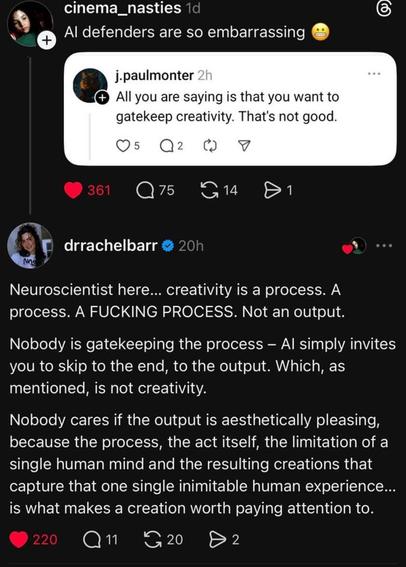"For all the alleged complexity of generative AI, at their core they really are models of language.
The problem is that according to current neuroscience, human thinking is largely independent of human language — and we have little reason to believe ever more sophisticated modeling of language will create a form of intelligence that meets or surpasses our own. Humans use language to communicate the results of our capacity to reason, form abstractions, and make generalizations, or what we might call our intelligence. We use language to think, but that does not make language the same as thought. Understanding this distinction is the key to separating scientific fact from the speculative science fiction of AI-exuberant CEOs.
The AI hype machine relentlessly promotes the idea that we’re on the verge of creating something as intelligent as humans, or even “superintelligence” that will dwarf our own cognitive capacities. If we gather tons of data about the world, and combine this with ever more powerful computing power (read: Nvidia chips) to improve our statistical correlations, then presto, we’ll have AGI. Scaling is all we need.
But this theory is seriously scientifically flawed. LLMs are simply tools that emulate the communicative function of language, not the separate and distinct cognitive process of thinking and reasoning, no matter how many data centers we build.
We use language to think, but that does not make language the same as thought."
https://www.theverge.com/ai-artificial-intelligence/827820/large-language-models-ai-intelligence-neuroscience-problems
#AI #GenerativeAI #LLMs #Chatbots #Intelligence #Reasoning #Neuroscience


